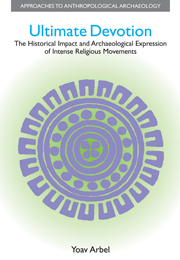 Ultimate Devotion
Ultimate Devotion Book contents
6 - Introduction – History, Archaeology and Religious Ideology
from Part II
Summary
For the structure that we raise,
Time is with materials filled;
Our todays and yesterdays
Are the blocks with which we build.
(Henry Wadsworth Longfellow, The Builders)The First Jewish Revolt against Rome (66—70 CE) is among the earliest religiously-inspired large-scale confrontations of which extensive documentation survives. Convictions of exclusive intimacy with divinity, adherence to strict ritual demands, contempt for extant political restrictions, confidence in moral superiority, and assuredness of success against all reasonable odds were all characteristic traits of the Jewish rebel factions. Variations of these same traits can be found in the ideological teachings of later radical offshoots of Christianity and Islam. An assessment of the ideological motivation that led the Jews to challenge the formidable armies of Rome is therefore in-dispensable for the analysis not only of this particular historical case, but of monotheistic religious intensity in general. The uprising and the period during which it occurred illustrate the workings, impact, and outcome of mass religious intensity through a wealth of textual and archaeological materials. The same body of evidence is also of considerable value for the history of warfare and for the research of ethnic and cultural identities.
History and Archaeology – Sisters and Rivals
The coordination between history and archaeology, upon which stands the model introduced in the following chapters, should not be taken for granted. Although one would expect such coordination between sister disciplines in the study of the past, scholarship reflects no small amount of thinly veiled rivalry.
- Type
- Chapter
- Information
- Ultimate DevotionThe Historical Impact and Archaeological Expression of Intense Religious Movements, pp. 63 - 69Publisher: Acumen PublishingPrint publication year: 2009


